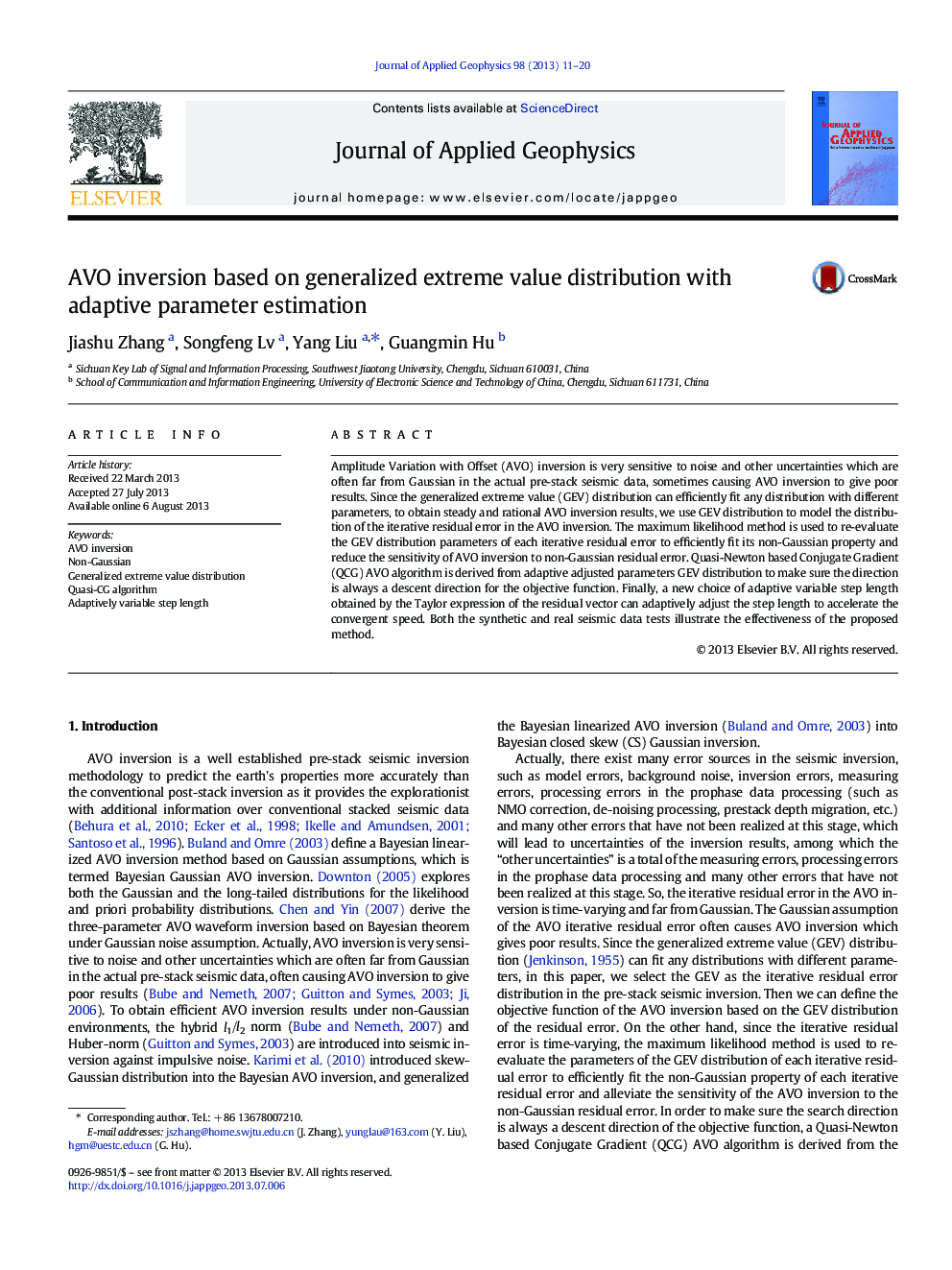| کد مقاله | کد نشریه | سال انتشار | مقاله انگلیسی | نسخه تمام متن |
|---|---|---|---|---|
| 4740259 | 1641153 | 2013 | 10 صفحه PDF | دانلود رایگان |

• The GEV distribution fit the non-Gaussian property of the residual error efficiently.
• Adaptive parameter estimation fits the time-varying residual error more accurately.
• The QCG AVO algorithm makes sure the search direction is always descending.
• The adaptively variable step length accelerates the convergent speed.
Amplitude Variation with Offset (AVO) inversion is very sensitive to noise and other uncertainties which are often far from Gaussian in the actual pre-stack seismic data, sometimes causing AVO inversion to give poor results. Since the generalized extreme value (GEV) distribution can efficiently fit any distribution with different parameters, to obtain steady and rational AVO inversion results, we use GEV distribution to model the distribution of the iterative residual error in the AVO inversion. The maximum likelihood method is used to re-evaluate the GEV distribution parameters of each iterative residual error to efficiently fit its non-Gaussian property and reduce the sensitivity of AVO inversion to non-Gaussian residual error. Quasi-Newton based Conjugate Gradient (QCG) AVO algorithm is derived from adaptive adjusted parameters GEV distribution to make sure the direction is always a descent direction for the objective function. Finally, a new choice of adaptive variable step length obtained by the Taylor expression of the residual vector can adaptively adjust the step length to accelerate the convergent speed. Both the synthetic and real seismic data tests illustrate the effectiveness of the proposed method.
Journal: Journal of Applied Geophysics - Volume 98, November 2013, Pages 11–20